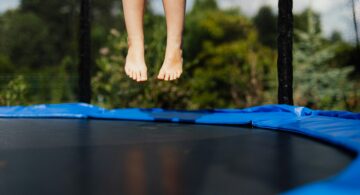Does A Workout Really Mean No Pain? No Gain?
So, you’ve just completed the first day of a new exercise regimen and you’ve worked muscles you never knew you had. 24 hours later you can barely sit down or lift your arm to brush your hair. The thought of working out again seems increasingly unlikely. The question arises: Is it better to grim and bare it and continue on with your workout plan, or rest up and feel like a slacker?!
Is it normal to feel pain days after a workout?
Chances are, if you’re a newbie to exercise, or you were living under the misconception that merely walking 30 minutes a day would transform your body, you are now working muscle groups that you’ve never really used before and you’re subsequently feeling the effects. Don’t worry. Muscle soreness is a common and completely normal symptom of physical activity.
Otherwise known as Delayed Onset Muscle Soreness, DOMS is caused by stressing the muscle tissue beyond what it’s accustomed to. Although it might sound a little horrifying, when we work a particular muscle group hard enough, lactic acid builds up in the muscle and tiny tears form in the fibers. This, combined with inflammation, is what causes the pain. Many of us mistake these symptoms for injury but DOMS is actually a positive bi-product of training our muscles. Muscle growth and adaptation is what ultimately produces the results we’re all looking for. So, to some extent there really is no gain without pain. To a beginner however, experiencing muscle pain and stiffness 24-72 hours after exercising can deter us from getting back into that exercise class or back to lifting weights in the gym.
Determining to what severity you are suffering from DOMS should be an important factor in deciding whether or not to workout. Most of us know that it’s important to rest 24 hours between working the same muscle group. But, what if you’re still feeling the effects two or three days later?
According to exercise physiologist Richard Weil, MEd, CDE, continued muscle stiffness and soreness for days after exercise is caused by swelling in the muscle compartment that results from an influx of white blood cells, prostaglandins and other nutrients and fluids that flow to the muscles to repair the “damage” after a tough workout.
Should I workout with sore muscles?
There are studies that show that neither aerobic nor resistance training helps to relieve the symptoms of DOMS. In the most severe instance,s when muscles are so sore that they prevent you from continuing with your workout, it’s probably best to work a different muscle group, do some light cardio or take the day off. If doing lunges got you into the predicament your in, it probably isn’t wise to go back to doing lunges until your quadriceps have had a chance to heal. Having said that, if however, your muscle soreness is tolerable, light exercise, such as some walking or jogging to get the blood pumping, is clinically proven to alleviate some of the symptoms of DOMS. The Journal of the American Academy of Orthopedic Surgeons concludes that following a period of DOMS, subsequent exercise sessions actually result in less injury and soreness.
However, experts in the exercise field recommend avoiding vigorous exercise that causes continued pain to avoid injuring yourself. Remember…. you are the only one who knows your own limits!
If your muscles feel sore to the touch and your exercise potential is clearly out of reach, rest up and take it easy for a day or two. As Weil explains, muscle growth actually occurs during downtime, not when you train, and if your muscles get sorer during your workout, then you need more time to rest, recover, and grow.



















